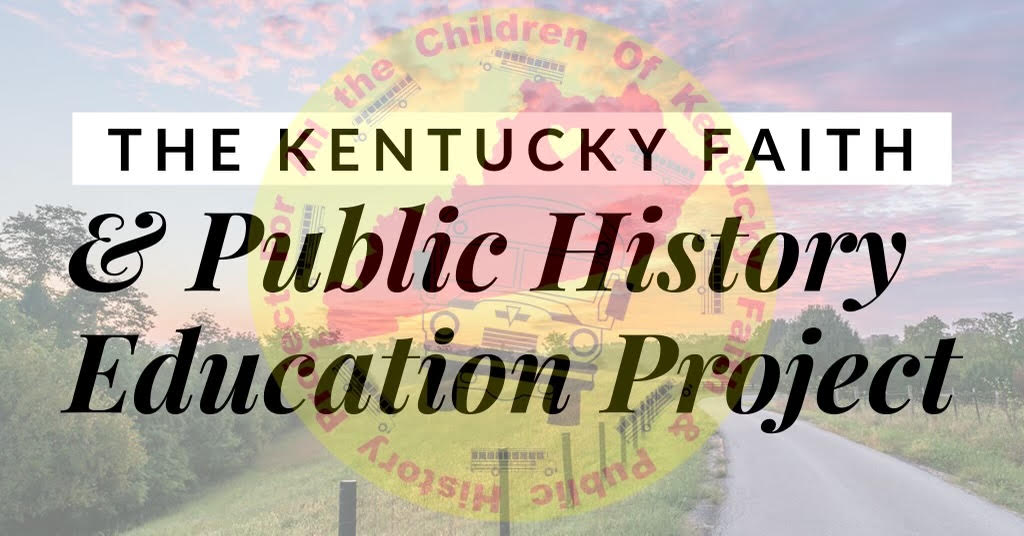By Lesley Barker PhD
History, or social studies, is not supposed to be a boring
array of names and dates to be memorized so as to pass a test. If that is how
you think about history, your teachers did not do the subject justice. Either
they were unaware of its importance and imaginative value or they presented a
historical perspective that did not include your story and you tuned out
because it seemed irrelevant to you. This happens a lot because, as it is
reputed to have been said by Winston Churchill, “History is written by the victors”. This blog and the Kentucky
Faith and Public History Education Project, in general, exist to provide
resources to help parents and homeschool educators introduce a fuller version
of history to their children. This post will discuss what a good history or
social studies education can produce in a person. Future posts will summarize
how children are typically introduced to history; ideas and perspectives that
are not always included in the traditional history or social studies curriculum;
suggestions for how to consider what your children need to learn and understand;
and how to communicate these lessons effectively.
Honor,
Redemption and Restoration
When a child
encounters a story about what happened in the past, they learn to honor the
people who lived long ago. Sometimes the honor goes to the victor in a struggle
for justice and truth. One could think of Abraham Lincoln as a victor to be
honored. Sometimes the honor should go to the people who suffered loss whose
voices have yet to be fully heard and whose stories need to be redeemed and
restored. The perspectives of the Native American peoples who were displaced
from their ancestral lands through broken treaties are among the stories that
need to be given more honor, for example. These under-told stories need to be
redeemed and restored to the historical record.
When
children visit a place where history happened and engage there with historical
artifacts, the children become transformed. Suddenly they have a personal
connection with the past. I used to be the director of the Bolduc House Museum,
an eighteenth century French Colonial historic site in Sainte Genevieve,
Missouri. The Louis Bolduc House is a vertical log home built in around 1792 by
a crew of enslaved Africans owned by the most prominent Frenchmen in that first
town in Missouri. Many fourth grade classes visited the site on field trips. I
would gather the class on the front porch of this historic house and direct the
students to each touch one of the logs in the wall. Then I would say, “These
logs have been here since George Washington was the president of the United
States when the capital was in Philadelphia.” I usually added a riddle: “but
George Washington was never the president of Sainte Genevieve.” This helped to
emphasize that the land west of the Mississippi River was not part of the
United States until after the 1803 Louisiana Purchase. The students’ eyes always
grew big as they touched these old logs that connected with a much larger story
than they realized. This kind of hands-on history, done well, is always
transformative. Transformation usually causes us to ask different kinds of
questions than we asked prior to the experience.
When
children are given the opportunity to participate in an activity from the past
such as spinning yarn, making butter or helping to make soap or candles, they
grow in their ability to think critically and creatively. This builds a kind of
wisdom. It is what happened to the Old Testament prophet, Jeremiah, when God
told him to go to the potter’s house. There, watching the potter spin a pot on
the wheel, notice an imperfection and then smash the clay to reform it into a
good pot, Jeremiah gained insight and wisdom from which he could use his
experience to understand and address problems in his nation. When historical crafts
and traditional activities are the means by which students are introduced to
the past, the strategy is called Living History. Museums like the Henry Ford
Museum, Colonial Williamsburg and Plymouth Plantation utilize Living History as
their primary interpretive strategy. It is an effective teaching tool by which
the students make connections and gain experience that often produces a
take-away item that serves as a souvenir, memory and possible door to future
creative expression.
Follow this blog
As parents and homeschool educators, you have the responsibility to communicate these values to your children: honor, redemption and restoration, transformation and wisdom. Follow this blog for ideas and resources about the Christian history of Kentucky that will make this task easier.


